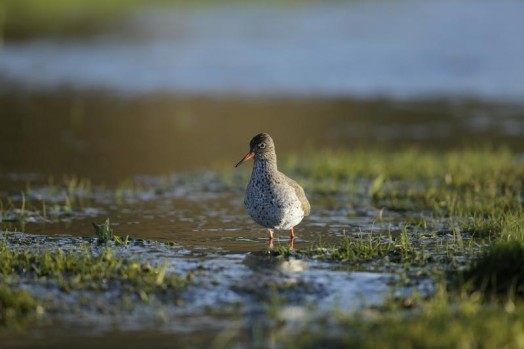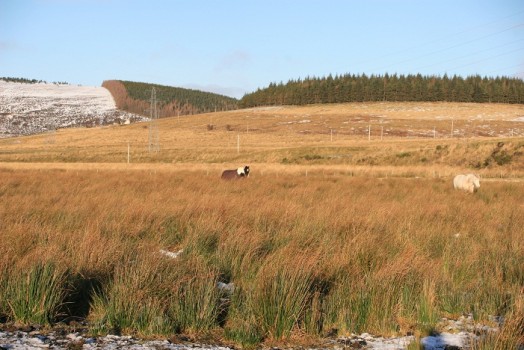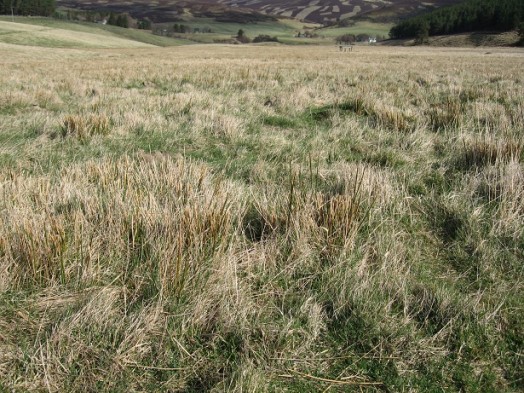Supporting guidance for Cutting of Rush Pasture
This is an old version of the page
This is an old version of the page
Date published: 30 March, 2015
Date superseded: 21 December, 2015
Low levels of rush in damp grassland is beneficial for wading birds such as lapwing and redshank. Aim for the rushes to cover no more than one-third of the field.

Redshank – Credit: Andy Hay – © RSPB images
What needs to be done?
Rushes should be to cut close to the ground – under 10 centimetres. Cutting higher than this will not reduce tussock height or vigour. To achieve more variation in the sward, avoid cutting uniform linear strips. Where possible, removing cuttings because they can mulch down and encourage new rush growth. After cutting graze the area, preferably with cattle, to trample the rushes.
Heavy rolling after cutting can also help break down the rootball.
Avoid poaching or creating wheel ruts as this can damage the soil structure and the sward, and encourage the establishment of invasive weeds.
If water levels can be raised, flooding to above the remaining growth can help control rushes. However, this should only be done outwith the breeding season where management is targeting waders.
Where ground conditions permit, either glyphosate or MCPA may be used with a weed-wiper. These chemicals are particularly effective when used on re-growing rush. In both cases, read the product label carefully before use. You should also consult the Scottish Environment Protection Agency about the use of herbicides in or near water. Avoid using herbicides on pastures with a significant presence of sharp-flowered rush, as this is often an indicator of more species-rich wetlands.
Be sure to check the detailed prescriptions of other options that apply to the same land. For example, if the Wader and Wildlife Mown Grassland option is in place, you may not roll, harrow or graze from 1 April until 30 June inclusive. The use of herbicides is also restricted.
Which fields to choose?
Choose fields that are good for breeding waders or Greenland White-fronted geese and that would benefit from rush management – i.e. high density of rush tussocks, where more than one-third of the field is covered by rush.
To benefit waders the Cutting of Rush Pasture option requires you to choose fields managed under one of the breeding wader annual recurrent options – wader grazed or mown grassland. This ensures that the field is suitable for breeding waders, and that other agricultural activity in the field does not affect birds in the breeding season.

Field suitable for rush management – Credit: Hywel Maggs

Field after good rush management – Credit: Hywel Maggs
Complementary options
If managing rush pasture for waders, the option requires you to combine this capital item with one of the following management options (these can be on different areas):
Further information
RSPB habitat management advice note: Rush Management for Wildlife
